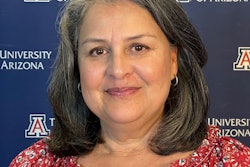In the struggle for access and opportunity, different racial and
ethnic groups have often — but not always — joined forces in an
attempt to exert influence over those who formulate national policy.
Sometimes the association has been harmonious; sometimes it has been
discordant. Sometimes it has been effective; other times it has been
non-productive. Below are seven examples of Black/ Hispanic coalition
efforts, some successful, some unsuccessful.
#1 Perhaps the most consistent and continuing example of effective
cooperation between the two groups is exhibited by the National
Association of African American Studies and the National Association of
Hispanic and Latino Studies. The associations annually hold joint
meetings to discuss ways to promote the value and necessity of ethnic
studies. In September, they circulated their first joint newsletter.
#2 From 1983 through 1993, Dr. Reginald Wilson and Sarah Melendez
of the American Council on Education formed another productive example
of Black/Brown teamwork. This dynamic duo shared responsibilities in
ACE’s Office for Minority Affairs and were instrumental in creating the
council’s annual report on minorities in higher education.
#3 When Proposition 209 was contested at the polls in California in
1996, the Black and Hispanic communities joined in a vigorous, albeit
latent, attempt to defeat the voter initiative that ultimately ended
the use of affirmative action by all state agencies, including colleges
and universities.
#4 One year later, in Houston, Black and Hispanic unity was
successful in preventing a similar initiative from prevailing at the
polls in that Texas city.
#5 Tensions between Blacks and Latinos arose recently over the
ownership of the publishing company that produces Latina magazine. An
article in the October edition of Hispanic magazine questioned the
right of Edward Lewis — the Black owner of Essence Publications, which
produces Essence and Latina — to profit from the publication of
magazines that targets Hispanics.
#6 When Proposition 187, California’s anti-immigration voter
initiative, was being contested, African Americans were notably absent
from the debate. Likewise, when Blacks were trying to get Arizona to
pass legislation that would make Dr. Martin Luther King Jr.’s birthday
a state holiday, they got very little support from the state’s Hispanic
community.
#7 The recent discussion over federal funding for Hispanic-serving
institution as part of the Higher Education Reauthorization (see story
on page 20) is perhaps the latest episode to play out on the national
stage. Although Congressional Black Caucus members ultimately sponsored
and supported funding for HSIs, the debate was, at times, acrimonious.
At one point during the discussions, which spanned two years, Dr. Henry
Ponder, president of the National Association for Equal Opportunity in
Higher Education, warned, “If you cut this pie more ways, everyone
involved will get less.” However, Dr. Antonio Flores, president of the
Hispanic Association of Colleges and Universities, noted, “No one has a
monopoly on the history of discrimination.”
COPYRIGHT 1998 Cox, Matthews & Associates
© Copyright 2005 by DiverseEducation.com















